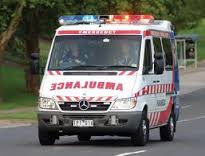Driving Lesson Lights Emergency Vehicles
FOG LIGHTS
Front and rear fog lights must only be used in fog or rain, or when conditions such
as smoke and dust limit your vision. It is a legal requirement that once conditions
improve and you can see more clearly, the front and rear fog lights are switched
off.
If your vehicle is not fitted with fog lights you may use your headlights during the
day in these adverse conditions.
HAZARD WARNING LIGHTS
Your vehicle’s hazard warning lights must not be used unless the vehicle is:
• Stopped and obstructing the path of other vehicles or pedestrians.
• Slow-moving and obstructing other road users.
• Stopped in an emergency stopping lane.
• Stopped to sell a product such as food and refreshment.
• Driving in hazardous weather conditions.
• Fitted with hazard lights as part of an anti-theft or alcohol interlock device.
HORNS AND OTHER WARNING DEVICES
You must not use the horn or any other warning device unless:
• You need to warn other road users that your vehicle is approaching.
• You need to warn animals to get off the road.
• The horn is being used as part of an anti-theft or alcohol interlock device fitted
to your vehicle.

EMERGENCY VEHICLES
Give way when you hear a siren or see the flashing blue or red lights of an
emergency vehicle such as Police, Fire Brigade or Ambulance. The siren means to
get out of the way so the emergency vehicle has a clear passage through traffic.
Generally, traffic pulls over to the left until the vehicle passes.
